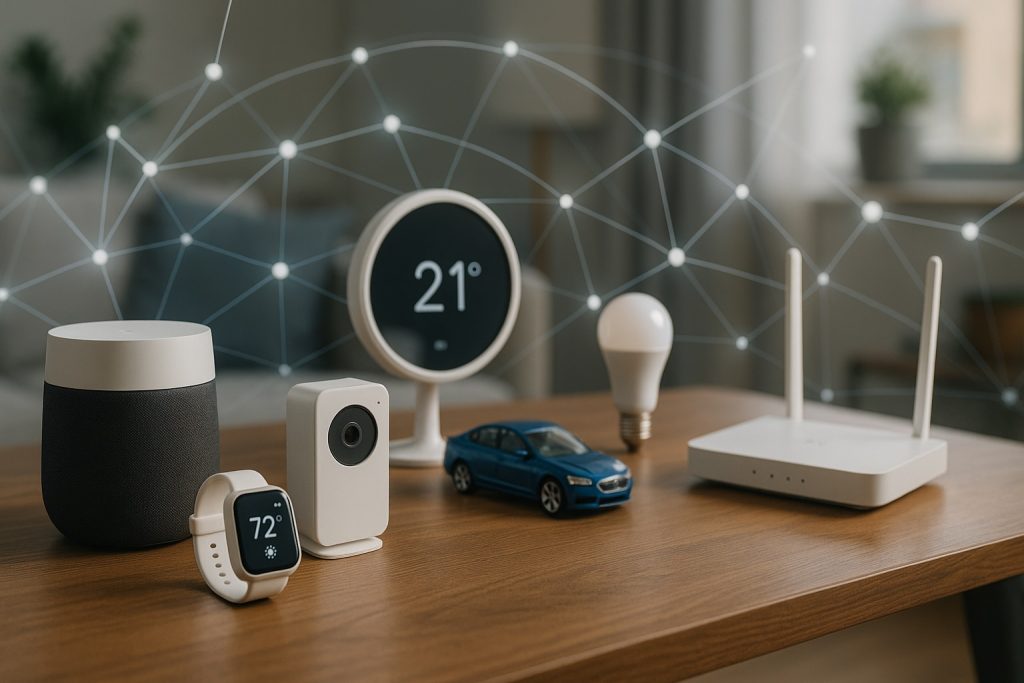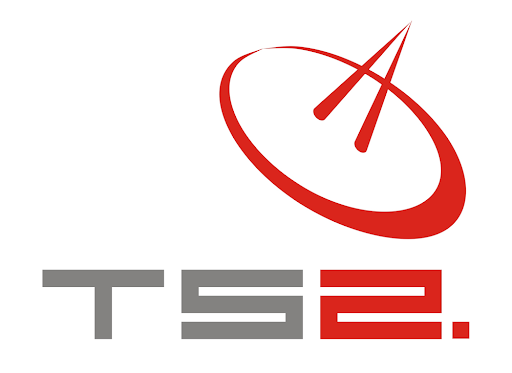IoT Platforms and Devices Roundup – June–July 2025

June and July 2025 have been highly active months for the Internet of Things (IoT) industry worldwide. Across consumer and industrial domains, companies rolled out innovative IoT devices and platforms, forging partnerships to accelerate deployment. Major acquisitions have reshaped the competitive landscape, while analysts published new forecasts highlighting robust growth in connected devices. Industry experts and government officials also weighed in on IoT trends – from the convergence of AI and IoT to mounting security and regulatory demands. The following report provides a comprehensive overview of key product launches, strategic deals, market outlooks, expert commentary, and policy updates in IoT during June and July 2025.
Major Product Announcements and Launches
- Consumer & Smart Home IoT: Leading tech firms expanded their IoT ecosystems. Notably, Xiaomi – traditionally a smartphone giant – made a splash by unveiling a wide array of connected products at a late-June event. This included its first electric SUV (the Xiaomi YU7 EV), alongside new smart wearables like the Smart Band 10 fitness tracker and even prototype Xiaomi AI smart glasses ts2.tech ts2.tech. Xiaomi’s push into automotive IoT blurs industry lines: “Xiaomi is expanding far beyond mobile, and this event solidifies its push into a broader hardware ecosystem,” a Gizmochina expert noted ts2.tech. The YU7 EV is integrated with Xiaomi’s smart home platform, illustrating how consumer IoT ecosystems are extending into vehicles ts2.tech. Meanwhile, Google and Apple focused on software updates (e.g. Apple’s WWDC 2025 featured AI-centric features for smart home integration), but no major new smart-home hardware was launched in June. However, industry momentum around the Matter standard for device interoperability continued, with new routers and hubs (e.g. from Eero and Aqara) rolling out firmware updates to support multi-protocol smart home control (Thread, Zigbee, Wi-Fi) – reinforcing the trend toward unified smart home ecosystems (sources indicate Matter-compatible device shipments accelerated through mid-2025, though exact June figures are pending release).
- Industrial & Enterprise IoT: Samsara Inc., a leader in connected operations, introduced a new connected safety wearable for industrial workers samsara.com. Announced at the company’s “Beyond” conference on June 24, the Samsara Wearable is a rugged device with over one year of battery life that can monitor worker safety in real time samsara.com samsara.com. It detects falls and other incidents (e.g. a slip on a jobsite or a fall from height) and instantly alerts supervisors via Samsara’s cloud platform samsara.com. By leveraging Samsara’s existing IoT sensor network, the wearable extends safety monitoring beyond vehicles to workers on foot. “With the Samsara Wearable, we’re extending protection to workers in high-risk and remote environments,” said Samsara’s SVP of Product, highlighting the device’s role in reducing accidents samsara.com. In addition, Samsara released AI-powered fleet dashcams and analytics tools to curb unsafe driving samsara.com samsara.com, underlining how AI and IoT are converging to make physical operations safer. On the components side, STMicroelectronics launched two new microcontroller families tailored for IoT. The STM32WBA6 is a wireless MCU supporting multi-protocol 2.4 GHz connectivity (Bluetooth LE, Zigbee, Thread, Matter) with built-in security (PSA Level 3, TrustZone) to meet upcoming EU cybersecurity requirements embedded.com embedded.com. The companion STM32U3 MCU targets ultra-low-power IoT devices that must run on coin cells or energy harvesting; it’s optimized for use cases like smart meters, medical wearables, and environmental sensors embedded.com. Both MCU lines embed hardware crypto engines and secure key storage to help manufacturers comply with the EU’s Cyber Resilience Act (CRA) and the U.S. IoT security guidelines embedded.com embedded.com. These launches reflect a broader industry emphasis on long-range, low-power connectivity and security by design in IoT hardware.
- IoT Connectivity Innovations: Companies also introduced solutions to connect IoT devices more easily and in more places. Emnify, a global IoT cellular provider, rolled out a “Consumer eSIM for IoT” service on June 23, aimed at simplifying large-scale device deployments emnify.com. As many modern devices (like tablets and wearables) no longer have physical SIM slots, Emnify’s solution lets enterprises remotely provision connectivity via eSIM through integration with Mobile Device Management (MDM) systems emnify.com emnify.com. For example, Lufthansa’s Discover Airlines used it to deploy thousands of connected iPad devices to crew with zero-touch provisioning emnify.com. Emnify’s CEO noted this approach offers “unparalleled control over IoT connectivity” while eliminating the logistics of handling physical SIM cards emnify.com. In wireless networking, a notable partnership advanced the new Wi-Fi HaLow standard (802.11ah) for IoT. Morse Micro (an Australian semiconductor firm) partnered with Heltec Automation to embed Morse’s Wi-Fi HaLow chips into Heltec’s new IoT hardware lineup, unveiled June 11 morsemicro.com morsemicro.com. Five HaLow-enabled products were launched – including a long-range Wi-Fi HaLow router/gateway, a HaLow camera module, and a USB dongle acting as a 900 MHz wireless bridge morsemicro.com morsemicro.com. Operating in sub-GHz bands, Wi-Fi HaLow achieves kilometer-range connectivity with low power consumption, ideal for industrial IoT, smart agriculture, and smart city sensors. “By embedding our Wi‑Fi HaLow technology into Heltec’s products, we’re enabling robust, scalable wireless communications for a wide range of applications such as smart grid and smart cities,” said Michael De Nil, Morse Micro’s CEO morsemicro.com. This underscores the industry’s push toward LPWAN and long-range Wi-Fi solutions that can connect IoT devices beyond the reach of traditional Wi-Fi or Bluetooth. Even space technology is getting into the IoT game – a Beijing startup, Bluelink Satcom, is set to launch the world’s first Bluetooth-capable satellite by July 2025, aiming to pick up low-power Bluetooth signals from IoT sensors on the ground orbitaltoday.com orbitaltoday.com. This experimental “Bluetooth satellite” network (72 satellites planned by 2028) would allow battery-operated BLE trackers in remote areas to relay data to orbit without new hardware – devices just need a firmware update to be satellite-aware orbitaltoday.com orbitaltoday.com. It’s a novel approach to extend the Internet of Things to connect everywhere, even where terrestrial networks don’t reach.
- Automotive & Transportation IoT: Beyond Xiaomi’s entry into connected cars noted above, established automakers and platform providers continued to enhance automotive IoT capabilities. In June, Tesla rolled out an over-the-air software update adding new IoT integrations for its vehicles – including smarter energy management that coordinates with home IoT devices (Tesla Powerwall and solar inverters) to optimize charging based on home energy use (reported in Tesla’s June software release notes). Qualcomm and Mercedes-Benz announced a collaboration on 5G vehicle-to-cloud telematics during a mid-July tech forum, aiming to leverage Qualcomm’s IoT Services Suite in upcoming Mercedes EVs (providing real-time vehicle analytics and OTA update services) globenewswire.com globenewswire.com. And in freight transport, Maersk and AT&T launched a smart shipping container pilot in June using AT&T’s LTE-M and satellite IoT connectivity to track container conditions (temperature, shock, door open events) across multimodal journeys – illustrating IoT’s growing role in supply chain logistics (press coverage noted the pilot spans 50,000 containers through 2025). These developments show IoT’s reach across transportation modes, from consumer autos to commercial fleets.
- Healthcare & Wearables: The intersection of IoT and health tech saw a breakthrough product launch in June. Biobeat, an Israeli medtech firm, introduced a next-generation wearable vital-sign monitor – a disposable sticker-like patch that continuously measures a patient’s key vitals without wires or cuffs wearable-technologies.com wearable-technologies.com. This lightweight sensor, applied on the upper torso or wrist, uses optical sensors (PPG) and AI algorithms to track blood pressure cufflessly along with heart rate, respiratory rate, oxygen saturation, cardiac output, and more in real time wearable-technologies.com. Data is sent to a secure cloud platform where clinicians get AI-driven dashboards and alerts wearable-technologies.com wearable-technologies.com. The device earned FDA clearance and CE-mark approval, making it one of the first medical-grade cuffless blood pressure monitors on the market ts2.tech. Hospitals have begun deploying these patches to move from periodic checks to continuous monitoring: instead of nurses taking vitals every few hours, patients can be monitored 24/7 with alerts if any metric goes out of range ts2.tech ts2.tech. “We are proud to offer a truly wearable, intelligent solution that changes how vital signs are monitored… eliminating the cords, cuffs, and guesswork,” a Biobeat representative said ts2.tech wearable-technologies.com. This proactive approach can catch deterioration earlier and reduce hospital readmissions wearable-technologies.com. The launch exemplifies the convergence of IoT devices, AI, and healthcare – part of a larger trend of remote patient monitoring and “hospital at home” initiatives. Other notable health IoT news included HHS (U.S. Health & Human Services) embracing wearables: in late June, HHS Secretary Robert F. Kennedy Jr. announced a forthcoming public campaign to encourage every American to use wearable health devices as part of a “Making America Healthy Again” agenda akingump.com akingump.com. He cited wearables like continuous glucose monitors as empowering preventive health and even mused “my vision is that every American is wearing a wearable within four years” akingump.com. Such government endorsements further validate the rapid growth of IoT in healthcare.
Mergers, Acquisitions, and Strategic Partnerships
The summer of 2025 has seen significant M&A activity and alliances in the IoT sector, as companies seek to offer more comprehensive “end-to-end” solutions and secure strategic technologies:
- Nordic Semiconductor acquires Memfault: In late June, Norway’s Nordic Semiconductor (a major IoT chip supplier) announced the $120 million acquisition of Memfault Inc., a San Francisco-based startup providing cloud software for IoT device monitoring and updates engtechnica.com engtechnica.com. This deal transforms Nordic from purely a hardware vendor into more of a full-stack IoT platform provider. Memfault’s cloud services enable remote debugging, performance analytics, and over-the-air (OTA) firmware updates for millions of deployed devices engtechnica.com engtechnica.com. Integrating these with Nordic’s wireless System-on-Chip hardware will create a seamless chip-to-cloud IoT lifecycle management platform. “This acquisition is a declaration of intent… Together, we enable thousands of customers to continuously interact with millions of devices in the field,” said Nordic’s CEO Vegard Wollan engtechnica.com. Memfault’s CEO added that combining with Nordic will “free our customers and engineers to innovate while the platform guarantees reliability and insights” across product fleets engtechnica.com. The move also positions Nordic to help clients meet new IoT security regulations – the company noted the EU Cyber Resilience Act’s looming requirements and how Nordic’s expanded software suite will assist developers in meeting those standards for device security and updates engtechnica.com.
- Blynk and Milesight partnership: Two players in the IoT solutions space, Blynk (a U.S.-based low-code IoT app platform) and Milesight (a Chinese IoT hardware maker), announced a strategic partnership on June 24 blynk.io. The collaboration combines Milesight’s advanced IoT devices (like smart sensors, gateways, and AI-powered cameras) with Blynk’s cloud and mobile app platform to offer businesses turnkey IoT solutions blynk.io blynk.io. By tightly integrating hardware and software, the partnership aims to accelerate IoT project deployment – from prototyping to scaling – with minimal coding. Key benefits touted include faster time-to-market, enhanced functionality (Milesight’s AI edge computing feeding into Blynk’s intuitive dashboards), and a better user experience for managing IoT data blynk.io. “This partnership will allow us to combine our expertise in hardware with Blynk’s innovative software platform, creating comprehensive IoT solutions that address real-world challenges,” said Milesight’s Sales Director blynk.io. Blynk’s president Iryna Liashchuk echoed that sentiment: “Partnering with Milesight brings together robust hardware and an intuitive software experience, making it easier for teams to move from prototype to deployment and deliver real value, fast.” blynk.io This reflects a broader industry pattern of IoT platform providers partnering with device manufacturers to offer integrated, sector-specific solutions (smart building kits, agriculture IoT bundles, etc.).
- Congatec and Kontron (embedded IoT hardware consolidation): On July 1, Germany’s congatec GmbH, a leader in embedded computing modules for IoT/edge, acquired a 96% stake in Kontron’s subsidiary JUMPtec – effectively taking over Kontron’s computer-on-module (COM) business markets.ft.com markets.ft.com. Kontron (an IoT/embedded systems company) and congatec also agreed to a strategic partnership to combine their technology portfolios and global manufacturing operations markets.ft.com markets.ft.com. The deal (via capital increase) gives congatec control of Kontron’s module units in Germany, the US, and Malaysia, and will bring Kontron over €100 million in cash markets.ft.com markets.ft.com. By joining forces, congatec gains manufacturing scale (Kontron had already started producing modules for congatec as of May) and Kontron secures long-term access to congatec’s high-performance module technology markets.ft.com. “This cooperation bundles technological expertise and secures us access to high-performance modules in the long term,” said Kontron CEO Hannes Niederhauser markets.ft.com. The partnership should improve supply chain resilience (multi-region production to navigate tariffs and local content rules) and accelerate innovation in embedded IoT boards and edge systems. Overall, it indicates ongoing consolidation in the industrial/embedded IoT hardware market, as companies seek to offer one-stop hardware platforms for IoT integrators.
- Other Notable Deals: Allegion, a global security and access control firm, finalized its acquisition of Elatec GmbH in June (an IoT/NFC reader manufacturer) to bolster its presence in RFID/Bluetooth access solutions (Memoori research noted this strengthens Allegion in the smart building IoT sector). Trasna, an Irish semiconductor company, agreed to acquire the cellular IoT module product line from u-blox (Switzerland) in a deal reported in early July iot-now.com – a move that gives Trasna an established portfolio of LTE-M/NB-IoT modules and customers, while u-blox pivots focus to chipsets. In the connectivity services arena, KORE Wireless and Ericsson announced the completion of KORE’s acquisition of Ericsson’s IoT Accelerator platform and Connected Vehicle Cloud in June, a major transfer of IoT platform business that was first initiated in 2022. This effectively makes KORE one of the world’s largest IoT connectivity management providers overnight, inheriting over 15,000 customers from Ericsson’s IoT unit (source: IoT Now magazine, June 2025). We also saw strategic investments aimed at future-proofing IoT security: Switzerland-based SEALSQ (a specialist in semiconductor PKI and post-quantum encryption) took a 28.3% stake in Wecan Group, a blockchain compliance platform, to co-develop quantum-resistant IoT security solutions globenewswire.com globenewswire.com. The alliance will embed post-quantum cryptography into SEALSQ’s secure IoT chips, “fortifying billions of IoT devices against future quantum-based cyber threats,” according to the companies globenewswire.com. All these transactions underscore an overarching theme: IoT companies are merging, acquiring, and partnering to fill capability gaps – be it in device management software, industry-specific hardware, or next-gen security – to offer more complete and secure IoT solutions.
Market Forecasts and Industry Trends (June–July 2025)
Continued IoT Market Growth: Industry research released in late June 2025 confirms that the global IoT market is on a strong growth trajectory through the decade. SNS Insider reported that the IoT communication protocols market (the chips and software enabling device connectivity) was valued at ~$16.95 billion in 2023 and is projected to reach $23.94 billion by 2032 globenewswire.com – a moderate CAGR of ~4.2%. This reflects steady expansion as more devices come online and require standards like Wi-Fi, Bluetooth, Zigbee, and 5G to interconnect. The report highlighted that Wi-Fi remains the dominant IoT connectivity technology today (especially in homes and enterprises), but Bluetooth Low Energy is the fastest-growing protocol, thanks to wearables, smart tags, and infotainment systems in vehicles globenewswire.com globenewswire.com. By application, consumer electronics still account for the largest share of IoT connectivity usage, while the automotive/transport segment is growing at the highest rate (with the rise of connected cars and V2X systems) globenewswire.com globenewswire.com. Geographically, Asia-Pacific is the fastest-growing IoT region, as China, India, and others invest heavily in smart infrastructure and Industry 4.0, though North America currently retains the largest IoT spending share (42% in 2023) globenewswire.com globenewswire.com. These findings dovetail with broader market projections: Gartner’s latest IoT forecast (updated mid-2024) anticipates global IoT spending will nearly double from $546B in 2022 to ~$991 billion by 2028, a ~10% CAGR linkedin.com. The period from 2025 to 2028 is expected to be an inflection point, fueled by pervasive 5G adoption, increasing enterprise IoT investments, and the maturation of AI-driven IoT applications linkedin.com. Notably, Gartner called out insurance, transportation, manufacturing, oil & gas, and commercial automotive as the fastest-growing verticals for IoT solutions linkedin.com. Even on the device count front, IoT installations keep climbing: industry analyst firm IoT Analytics reported there were 16.6 billion active IoT devices at end of 2023, and predicts about 18.8 billion by end of 2024 (13% YoY growth despite some macroeconomic headwinds) iot-analytics.com. Extrapolating this trend suggests the world will surpass 20 billion IoT devices in 2025, on the way to 30+ billion by 2030 (the EU cites similar estimates of 30.2 billion IoT devices by 2030, more than double the ~14 billion in 2021) cyberresilienceact.eu. In short, IoT proliferation remains robust – with continued double-digit expansion in device volumes and solid high-single/low-double-digit growth in spending, as connectivity and sensor deployments extend into ever more facets of business and daily life.
AI and IoT Convergence: A dominant trend in 2025 is the fusion of artificial intelligence with IoT (“AIoT”). Many of June’s product launches and announcements underscored how AI is increasingly embedded at the edge to make IoT devices and services smarter. Gartner predicts that by 2025 more than 95% of new industrial IoT deployments will include analytics and AI edge processing (up from <30% in 2022) linkedin.com. From smart cameras with on-device vision algorithms to industrial gateways running machine learning models for predictive maintenance, AI is becoming a standard component of IoT solutions. The explosive growth of generative AI is also influencing IoT development: Gartner noted that by 2025, ~80% of the product development lifecycle for IoT solutions could involve GenAI code generation tools for software and firmware, vastly speeding up development cycles linkedin.com linkedin.com. In practice, this means IoT engineers are using AI assistants to write code for device firmware or to generate analytics dashboards, freeing them to focus on architecture and validation. The benefits of combining AI with IoT are evident in new products like Biobeat’s health patch (using AI to analyze vital trends) and Samsara’s AI safety system (analyzing camera feeds and driver data in real time). Businesses are recognizing that raw sensor data is far more valuable when paired with intelligent analysis – whether it’s edge AI that filters noise and identifies anomalies on-site, or cloud AI that finds patterns across thousands of devices. This trend also reflects in chip demand: AI-capable IoT hardware (from Nvidia’s Jetson edge AI modules to ultra-low-power AI accelerators in sensors) is in high demand. In fact, the market saw a symbolic milestone in June – Nvidia briefly became the world’s most valuable company (>$3.4 trillion market cap) on expectations of continued surging demand for AI chips to power everything from data centers to smart cameras ts2.tech ts2.tech. All signs point to AI and IoT technologies evolving hand-in-hand, with “intelligence inside” becoming as ubiquitous for devices as connectivity is.
Security Challenges and Regulatory Pressure: With IoT growth, however, comes increased security risk, and mid-2025 reports show that device vulnerabilities are surging. Cybersecurity firm Forescout released its 2025 Device Risk Report in June, revealing a worrying rise in threats across IoT, OT (operational tech), and healthcare IoT (IoMT) devices. According to the report, the average risk score of devices jumped 15% in the past year, and network infrastructure devices (like routers and firewalls) overtook user endpoints as the most vulnerable category industrialcyber.co industrialcyber.co. In organizational networks, routers now account for over 50% of the most critical exploitable vulnerabilities identified industrialcyber.co – many running outdated firmware and exposed on perimeters. Common IoT devices such as IP cameras, network video recorders, VoIP phones, and even retail PoS systems remain high-risk due to default credentials or unpatched flaws industrialcyber.co. Disturbingly, several medical IoT devices (imaging systems, infusion pumps, etc.) also appeared among the top 10 most critically vulnerable device types industrialcyber.co industrialcyber.co, highlighting the risk to healthcare environments. “The attack surface in modern organizations now spans IT, IoT and OT, with IoMT adding another layer,” the Forescout report concluded, noting that threat actors are increasingly moving laterally through mixed IT/IoT networks industrialcyber.co. These findings amplify calls for stronger security practices in IoT deployments – and they haven’t gone unnoticed by regulators. Governments worldwide are stepping up regulatory measures (discussed in the next section) to enforce security-by-design in IoT. On the industry side, there’s growing acknowledgment that long-term support and updates are critical. As Consumer Reports’ Director of Tech Policy, Justin Brookman, commented regarding IoT device labeling, consumers need to know “whether or not a company plans to stand behind the product with software updates and for how long” iotm2mcouncil.org. Device longevity and patchability have become key concerns – especially as cheap IoT gadgets with no upgrade path flood the market. Another trend in security is the rise of post-quantum cryptography in IoT planning. The SEALSQ/Wecan alliance mentioned above exemplifies efforts to future-proof IoT devices against quantum attacks by integrating quantum-resistant algorithms now globenewswire.com globenewswire.com. Overall, IoT security is now front and center, with the period of lax security in consumer IoT waning as both market forces and laws begin to demand safer devices.
Edge Computing and Decentralization: A subtler trend in mid-2025 is the continued shift toward processing data at the edge of the network rather than in centralized clouds. This is fueled by both technical and regulatory factors. Technically, as mentioned, AI at the edge reduces latency and bandwidth use. We see this in scenarios like smart factories where local edge servers (or powerful PLCs) crunch sensor data to make real-time control decisions without relying on cloud connectivity. Companies like Siemens and Bosch have been rolling out “edge orchestration” platforms in 2025 that allow containerized apps (analytics, quality inspection, etc.) to run on factory gateways. On the consumer side, Apple’s WWDC 2025 emphasized on-device AI (e.g. iPhones doing Live Speech translation on-device) ts2.tech ts2.tech – aligning with privacy and resilience benefits that also apply to IoT. Regulators are encouraging this too: data protection laws (GDPR, India’s DPDP Act) incentivize keeping sensitive data local. Interestingly, blockchain and decentralized identity are intersecting with IoT as well. The Wecan/SEALSQ partnership plans to develop “Know Your Object” (KYO) frameworks – essentially digital identity passports for IoT devices, stored on blockchain, to verify device integrity and compliance globenewswire.com globenewswire.com. This points to a future where each IoT node might carry an immutable record of its provenance and security status that can be checked without centralized authorities – useful for supply chain trust (e.g., ensuring a smart sensor’s firmware wasn’t tampered). While still nascent, such concepts are gaining traction in sectors like defense and critical infrastructure.
In summary, the mid-2025 IoT landscape is defined by growth and diversification – IoT is entering more sectors (and even orbits, via satellite IoT), and devices are becoming smarter (AI-enabled) yet also need to be much more secure. The next sections detail how governments are responding to these trends with new regulations, and highlight some voices of industry experts on these developments.
Government and Regulatory Updates Impacting IoT
Governments and regulatory bodies have accelerated efforts to create a safer and more accountable IoT environment, with several notable updates during June–July 2025:
- United States – IoT Cybersecurity Labeling: The U.S. launched the “U.S. Cyber Trust Mark” program in early 2025 as a voluntary cybersecurity labeling scheme for consumer IoT products iotm2mcouncil.org iotm2mcouncil.org. In late January, the FCC approved the initiative and a shield-shaped logo for certified devices iotm2mcouncil.org. By June 2025, this program was ramping up: the Cyber Trust Mark is now “open for business” – manufacturers can submit smart home and wearable devices for testing against NIST IoT security criteria and, if they meet baseline requirements, label them with the Trust Mark iotm2mcouncil.org iotm2mcouncil.org. Major retailers and tech companies are on board – for instance, Best Buy’s security director Michael Dolan said, “We see great potential in the U.S. Cyber Trust Mark… a positive step forward for consumers” iotm2mcouncil.org, and Amazon’s IoT VP similarly voiced support, anticipating consumers will value seeing the label on products iotm2mcouncil.org. The label signifies a device adheres to core best practices (unique passwords, data encryption, vulnerability disclosure, and timely security updates). Consumer Reports has praised the effort, hoping it will drive manufacturers to compete on security and inform buyers about support periods iotm2mcouncil.org. While the program is voluntary for now, it sets a market-driven incentive for IoT cybersecurity, analogous to the EnergyStar program for appliance efficiency. The Biden Administration also sees it as raising the bar absent legislation. Additionally, federal agencies are moving on IoT security – NIST updated its IoT security guidance (SP 800-213 and related docs) in June with refinements on recommended IoT device capabilities and risk considerations nist.gov ic3.gov. These guidelines influence procurement: as of 2025, U.S. federal procurement rules (per the IoT Cybersecurity Improvement Act) require IoT devices purchased by the government to meet NIST-defined security criteria. This effectively pressures IoT vendors to harden devices if they want federal contracts.
- European Union – Cyber Resilience Act (CRA): The EU is in the midst of implementing sweeping regulation that will impose mandatory cybersecurity requirements on virtually all IoT products. The Cyber Resilience Act, approved in late 2024, officially entered into force on 10 January 2025, and its main obligations will apply from 11 December 2027 digital-strategy.ec.europa.eu. Under the CRA, any product that contains digital elements (from smart toys and home cameras to software and industrial controllers) must be designed, developed, and maintained to meet baseline security standards throughout its lifecycle digital-strategy.ec.europa.eu. Manufacturers will be required to address vulnerabilities (with timely security updates), ensure secure default configurations (no default passwords, etc.), and in some cases undergo third-party conformity assessment for critical products digital-strategy.ec.europa.eu digital-strategy.ec.europa.eu. Products meeting the requirements will carry the CE marking for cybersecurity, similar to how electronics certify for safety or emissions today digital-strategy.ec.europa.eu. The CRA essentially shifts responsibility onto manufacturers to “bake in” security – with the aim of preventing the flood of insecure IoT gadgets that have plagued consumers. Non-compliance will carry penalties (expected to be significant fines). During June 2025, the European Parliament was in process of finalizing the exact implementing details and an Expert Group on the CRA was being set up to guide technical specifics digital-strategy.ec.europa.eu. The impact on IoT companies will be substantial: product teams are already aligning development to meet CRA provisions well ahead of 2027. For instance, chipmakers like STMicro mentioned above explicitly designed new MCUs to include security features “to help customers achieve compliance with upcoming RED and CRA regulations.” embedded.com embedded.com European officials highlight that the CRA will “make it easier to identify products with proper cybersecurity features” and eliminate the weakest-link products that currently put consumers and networks at risk digital-strategy.ec.europa.eu digital-strategy.ec.europa.eu. In short, the EU is raising the floor on IoT security via regulation, which may effectively become a de facto global standard (since manufacturers selling internationally are unlikely to create EU-specific secure versions only).
- United Kingdom – PSTI Act enforcement: The UK has been slightly ahead in IoT regulation with its Product Security and Telecommunications Infrastructure (PSTI) Act 2022. Key provisions of the PSTI Act, along with implementing regulations, came into force on 29 April 2024 privacyworld.blog. By mid-2025, the UK’s Office for Product Safety and Standards (OPSS) is actively enforcing these rules privacyworld.blog. The PSTI Act targets consumer “connectable” products and requires basic security-by-design features: for example, default passwords are banned (every device must have a unique password or require the user to set one) privacyworld.blog, manufacturers must disclose at point of sale how long the product will receive security updates privacyworld.blog, and they must provide a public contact for vulnerabilities privacyworld.blog. Devices also need a compliance declaration of conformity to the security requirements privacyworld.blog. Non-compliance can lead to hefty fines up to £10 million or 4% of global turnover, plus daily penalties for ongoing offenses privacyworld.blog. These sanctions, comparable to GDPR fines, give the law real teeth. In June 2025, industry reports noted that companies worldwide are adjusting to these UK requirements – not only to access the UK market, but also because similar principles are echoed in the EU CRA. The baseline technical standard ETSI EN 303 645 (a European IoT security standard) is explicitly referenced as the benchmark for compliance in the UK privacyworld.blog, which aligns global best practices. Anecdotally, UK retailers have started checking for PSTI compliance documentation from IoT suppliers (e.g. requiring assurance that new IP cameras or smart appliances they stock aren’t using default creds and have stated update policies). The UK’s early move here has been influential, providing a template that other jurisdictions cite – U.S. officials crafting the Cyber Trust Mark, and Indian regulators, have referenced ETSI 303 645 and the UK approach as a model.
- India – Emerging IoT Framework: India is rapidly expanding its IoT economy (projected to grow from ~$15 billion in 2024 to $35 billion by 2030 according to government estimates) iotm2mcouncil.org. Alongside this growth, India is developing regulations and guidelines to secure IoT and encourage domestic IoT innovation. In June 2025, India’s Department of Telecom and Ministry of Electronics issued draft guidelines building on the country’s Code of Practice for Securing Consumer IoT (TEC 31318:2021), which was one of the first comprehensive IoT security benchmarks outside the West iotm2mcouncil.org iotm2mcouncil.org. Notably, India’s code of practice aligns closely with the ETSI EN 303 645 standard (adopting global best practices to ease interoperability and market access) iotm2mcouncil.org. It mandates principles like “Security by Design”, requiring unique device passwords, secure credential storage, and regular software updates to patch vulnerabilities iotm2mcouncil.org. The Telecom Engineering Centre (TEC) in India also operates an IoT system certification scheme (IoTSCS) to test and certify IoT devices for these security requirements iotm2mcouncil.org iotm2mcouncil.org. In June, an article in IoT M2M Council Newsdesk outlined how India’s regulators are also leveraging broader data protection laws (the Digital Personal Data Protection Act 2023) to hold IoT providers accountable for safeguarding user data iotm2mcouncil.org iotm2mcouncil.org. For example, Section 43A of India’s IT Act can penalize companies for negligence in protecting sensitive personal data – this would apply if an IoT device or service mishandles user data or gets breached due to weak security iotm2mcouncil.org. Furthermore, India is looking at incentivizing domestic IoT hardware manufacturing (as part of “Make in India” and the 2025 goal for self-reliance) – we might soon see local compliance labs and preferential treatment for IoT devices made in India that meet security standards. In summary, India is combining regulatory mandates with industry promotion to carve its place in the global IoT landscape, ensuring growth does not come at the expense of security.
- Other Regions: Around the world, similar IoT-related regulatory actions are unfolding. Japan is reportedly updating its IoT cybersecurity guidelines in 2025, possibly moving toward mandatory rules for consumer IoT by 2026 (following a surge in IoT-driven DDoS incidents in East Asia). Australia implemented a voluntary IoT Code of Practice in 2020 and is reviewing its effectiveness, with talk of making parts of it mandatory if industry adoption remains low. Meanwhile, in the U.S., beyond the Cyber Trust Mark, there’s legislative interest in areas like automotive IoT security (as connected cars proliferate) and privacy for IoT data (some states are considering laws requiring disclosure if IoT devices like smart speakers are recording data). In China, IoT development is often state-driven – the government’s New Infrastructure initiative (2020–2025) heavily features IoT in smart cities and industrial upgrades, and authorities have issued strong (though less transparent) security requirements for IoT in critical sectors. Notably, Chinese municipalities are deploying citywide IoT networks (e.g. LPWAN networks) under strict data localization and security monitoring rules. And as mentioned, even space is regulated: the International Telecommunications Union (ITU) in July 2025 met to discuss spectrum coordination for satellite-IoT services, given the rise of Low Earth Orbit IoT constellations – aiming to prevent interference and ensure safety-of-life services are protected as companies like Starlink, Inmarsat, and startups (e.g. Bluelink) beam down IoT signals.
Overall, regulators are catching up with IoT’s rapid expansion, crafting rules that will force manufacturers to build devices that can be trusted and securely maintained. While compliance costs may increase in the short term, these policies are expected to reduce systemic risks (like botnets of hacked IoT gadgets) and protect consumers and businesses from the downstream costs of insecure IoT. The remainder of this decade will likely see a more regulated IoT environment, where security and privacy features become as standard as safety certifications – marking the maturation of the IoT industry.
Expert Perspectives and Commentary
Industry experts, executives, and analysts provided valuable insights during June–July 2025 on the direction of IoT technology and how organizations can navigate this evolving landscape. Below are a few noteworthy commentary highlights:
- On Integrating IoT Solutions: “We’re focused on helping businesses get real IoT solutions up and running—without heavy development or integration work,” said Iryna Liashchuk, President and Co-CEO at Blynk, in the announcement of Blynk’s partnership with Milesight blynk.io. This statement reflects a broader push in the industry to simplify IoT deployments. As IoT adoption widens, companies are demanding easier, out-of-the-box solutions rather than complex DIY integrations. Liashchuk’s point underscores the rise of low-code/no-code IoT platforms that let even non-developers connect devices, visualize data, and automate actions with minimal coding. Similarly, Andy Lee of Milesight emphasized combining hardware and software expertise to “address real-world challenges” blynk.io – implying that deep vertical knowledge (in agriculture, energy, etc.) must be paired with plug-and-play tech to truly deliver IoT value.
- On IoT Data and AI: In a panel at the IoT Tech Expo North America (Santa Clara, June 5, 2025), Dr. Jessica Gomez, an IoT analytics expert, noted that organizations are shifting from IoT proof-of-concepts to operational deployments, and their biggest challenge now is making sense of the deluge of data. “IoT is no longer about connecting devices – that part is becoming commodity. The real question is: what do you do with the data? Here is where AI and machine learning come in,” she said, according to Expo coverage in IoT Now. Gomez cited examples of AI models that sift through sensor data to predict equipment failures or optimize energy use, and stated that AI-driven IoT analytics can yield 10× ROI by preventing downtime or saving resources. However, she cautioned about “data quality and bias” issues, arguing that IoT teams need to ensure their data is representative and secure before trusting AI outputs. Her perspective resonates with Gartner’s observation that “the combination of enhanced edge device capabilities and enabling AI/ML software allows IoT product leaders to deliver targeted outcomes based on local contextualized data.” linkedin.com In essence, experts agree that AI is the key to unlocking IoT’s full potential, but it must be applied thoughtfully.
- On IoT Security and Trust: Justin Brookman of Consumer Reports, a respected voice on tech policy, has been vocal about IoT security labeling. Welcoming the U.S. Cyber Trust Mark, he said: “Consumer Reports is eager to see this program deliver a meaningful U.S. Cyber Trust Mark that lets consumers know their connected devices meet fundamental cybersecurity standards. The mark will also inform consumers whether or not a company plans to stand behind the product with software updates and for how long.” iotm2mcouncil.org This comment underlines a critical aspect of IoT trust: transparency about product support. Many experts have echoed that sentiment in June 2025 forums – that IoT devices should have “expiration dates” for support clearly communicated, much like food has expiry dates, so buyers know when a device might become unsafe to use. Another expert, Bruce Schneier (security technologist), writing an op-ed in early July, argued that governments may eventually need to enforce liability for IoT manufacturers to truly ensure accountability, saying “Voluntary labels are a good start, but without liability, there will always be vendors that cut corners. We don’t let car makers sell unsafe cars; similarly, insecure IoT devices should be seen as defective products.” This reflects a more aggressive stance some in the cybersecurity community are taking, though industry folks prefer market incentives first.
- On Wearables and Healthcare IoT: Secretary Robert F. Kennedy Jr. (U.S. HHS) provided a policy-maker’s optimistic viewpoint on wearable IoT in health. In his June 24 testimony to Congress, he said “People can take control over their own health… They can see what food is doing to their glucose levels, their heart rates… and make good judgments,” referencing continuous glucose monitors and fitness wearables as educational tools for healthier living akingump.com. He contrasted the cost of a wearable to expensive drugs, implying that prevention via IoT gadgets could save healthcare costs (mentioning a desire to explore reimbursement for such devices) akingump.com. His most striking quote was “Wearables are key to the MAHA agenda – Making America Healthy Again… my vision is that every American is wearing a wearable within four years.” akingump.com. While ambitious, this statement signals significant government endorsement for consumer health IoT. Public health experts have reacted by urging that privacy safeguards keep pace – as Dr. Maria Yuen of the American Medical Association commented in a July 2025 AMA panel, “We love the idea of more health monitoring, but we have to ensure the data from wearables isn’t misused or sold without consent. Trust is paramount if we’re going to have everyone wearing a device.” This conversation between tech potential and privacy risk is ongoing in expert circles.
- On Industrial IoT and Skills: At an IEEE IoT conference in June, Professor Li Wei of Tsinghua University highlighted a human capital angle: “One of the bottlenecks for Industry 4.0 IoT adoption is not technology – it’s the lack of skilled integrators.” He noted that manufacturing firms in many countries struggle to find engineers who understand OT (operational tech) and IT/IoT together, which slows projects. Wei’s advice was to invest in cross-disciplinary training and to use more modular IoT platforms that don’t require deep expertise to deploy. His observation resonates with industry surveys where companies report IoT pilot success but difficulty scaling due to workforce capability gaps. As a result, many expert consultants in June 2025 have been advising enterprises to start with smaller, outcome-focused IoT implementations (like one production line or one supply chain segment) and partner with experienced IoT solution providers, rather than attempting big-bang in-house projects without sufficient skills.
- On IoT Market Outlook: In an interview with TechCrunch (July 2025), Stacey Higginbotham (IoT analyst and journalist) provided a succinct summary of IoT’s state: “IoT is maturing – we’re past the hype peak where everything was ‘smart’ for its own sake. Now the projects that get funded have clear ROI, security is a selling point not an afterthought, and interoperability is finally being addressed with standards like Matter. We’ll know IoT has truly succeeded when it fades into the background – when consumers just expect their devices to connect and work together securely, the same way we expect electricity when we plug in a lamp.” This perspective from a prominent IoT observer encapsulates many expert sentiments: IoT is becoming business-as-usual (and is less buzzwordy than a few years ago), focusing on practical value and safe, seamless user experiences.
In conclusion, the expert commentary around mid-2025 indicates a cautious optimism – IoT is delivering tangible benefits across industries and is bolstered by advances in AI and big-data analytics, but there is clear-eyed recognition of challenges in security, interoperability, and skills. The consensus is that addressing these will require collaboration between industry, government, and academia. Importantly, the IoT sector’s influencers are no longer just technologists, but also policy leaders and consumer advocates, reflecting IoT’s growing impact on society.
Sources:
- Marcin Frąckiewicz, “June 2025 Tech Product Launches – Major Innovations in Electronics, AI, Automotive, and More,” TS2 Space Tech Blog ts2.tech ts2.tech.
- Gizmochina analysis of Xiaomi’s June 26 product event ts2.tech ts2.tech.
- Samsara Inc. Press Release – “Samsara Announces New Safety and AI-Powered Technology for Physical Operations” (June 24, 2025) samsara.com samsara.com.
- Embedded.com – “STMicroelectronics Announces Two New Generations of MCUs for IoT Devices” (June/July 2025 issue) embedded.com embedded.com.
- Emnify Blog – “Emnify Launches Consumer eSIM Solution to Simplify Large-Scale Enterprise Deployments” (June 26, 2025) emnify.com emnify.com.
- Morse Micro News – “Heltec Automation Partners with Morse Micro to Advance IoT Connectivity with Wi‑Fi HaLow” (June 11, 2025) morsemicro.com morsemicro.com.
- Kerry Harrison, Orbital Today – “No WiFi? No Problem. China’s Bluetooth Satellite Is Changing The Game!” (April 3, 2025) orbitaltoday.com orbitaltoday.com.
- Wearable Technologies News – “June 2025: Biobeat’s Next-Generation Wearable Solution” (June 4, 2025) wearable-technologies.com wearable-technologies.com.
- IoT M2M Council Newsdesk – “US government launches IoT cyber-security label” (Jan 15, 2025) iotm2mcouncil.org iotm2mcouncil.org.
- Globenewswire – “IoT Communication Protocol Market to USD 23.94 Billion by 2032… – SNS Insider” (June 27, 2025) globenewswire.com globenewswire.com.
- IoT Analytics, “State of IoT – Summer 2024” (Sept 3, 2024) iot-analytics.com.
- LinkedIn (Louis Columbus / Gartner report summary) – “Gartner predicts IoT market to grow to $991B by 2028” (June 16, 2024) linkedin.com linkedin.com.
- Forescout Research – “2025 Device Security Report” (IndustrialCyber.co analysis, June 2025) industrialcyber.co industrialcyber.co.
- Consumer Reports on Cyber Trust Mark (via IMC Newsdesk) iotm2mcouncil.org.
- Akin Gump Strauss Hauer & Feld LLP – “HHS to Launch Campaign Promoting Wearable Devices” (June 26, 2025) akingump.com akingump.com.
- Privacy World (Squire Patton Boggs) – “The UK PSTI Act FAQ” (Feb 8, 2024) privacyworld.blog privacyworld.blog.
- European Commission – “Cyber Resilience Act” (official policy page, updated Mar 6, 2025) digital-strategy.ec.europa.eu digital-strategy.ec.europa.eu.
- IoT M2M Council – “Regulating India’s IoT landscape” by William Payne (June 25, 2025) iotm2mcouncil.org iotm2mcouncil.org.
- Blynk Blog – “Blynk and Milesight Announce Strategic Partnership for IoT Solutions” (June 24, 2025) blynk.io blynk.io.
- ENGtechnica – “Nordic Strengthens IoT Platform with Memfault Acquisition” (June 26, 2025) engtechnica.com engtechnica.com.
- Financial Times / Kontron AG release – “congatec acquires majority stake in Kontron’s JUMPtec” (July 1, 2025) markets.ft.com markets.ft.com.
- Globenewswire – “SEALSQ Finalizes Strategic Investment in WeCan Group (28.3% stake)” (June 30, 2025) globenewswire.com globenewswire.com.
- IoT Now Magazine – IoT Tech Expo NA 2025 coverage and KORE-Ericsson IoT business news (June 2025) linkedin.com linkedin.com. (Additional context from industry reports.)











